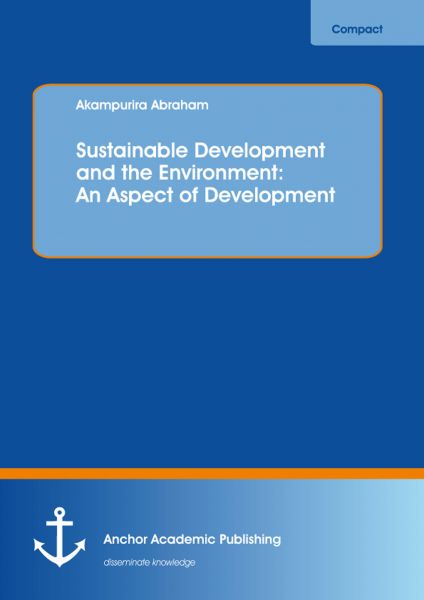Sustainable Development and the Environment: An Aspect of Development
The survival of man depends on the physical environment. The use of the environment has increased in order to satisfy the needs of men. Therefore, human negligence and collective actions for economic gains have put the environment at a disadvantage.Many of the natural ecosystems have been interfered. This has been through encroachment on forest reserves, degradation of wetlands, uncontrollable expansion of agricultural land leading to soil erosion and soil exhaustion, overgrazing and burning of grasslands leading to bear soils that are susceptible to erosion agents. A sustainable situation occurs when man’s ability to use natural resources can be replenished naturally. Man’s activity has outstretched the ability of these resources to replenish naturally. The interactions of man’s current processes with the environment have strained it. The man’s disturbance affects the interdependence of the atmosphere that is the lithosphere, the hydrosphere and the biosphere which lead to environmental degradation.
Text Sample:
Chapter 4.4, Water management:
Water is a universal necessity for life. Increasingly polluted and diminishing fresh water supplies threaten health and food security and affects economic growth. In Central America, only 21% of the fresh water available in 1950 remains today. This trend is due to extensive deforestation and lack of incentives for sustainable land use.
Dry beds have resulted as a result of poor water management system. Climate change due to long droughts is one of the major contributors of river dry beds. The environment management is very important to keep a stable climate. Drying of the river beds leaves some invertebrates to suffer leading to their extinction. Steward, Alisha L, (2011), explains that dry river beds are physically harsh and they often differ substantially in substrate, topography, and microclimate and inundation frequency from adjacent riparian zones. Given these differences, dry river beds provide a unique habitat for terrestrial invertebrates. The dry beds form a habitat of other animal and plant species, but the original species in the habitat mostly face extinction.
Provision of the upper catchments above villages and valleys help to prevent soil erosion; rebuild eco-systems and slow water across landscape. Forests restore the water table making the river to flow throughout the year. Richard Kimbowa (2013) asked the government to expedite the implementation of the EAC policy on climate change. Experts have warned some water resources such as around L.victoria which is believed to have faced enormous ecological changes. These changes are related to problems of poverty, high population growth rate, land degradation, water quality and declining agricultural productivity. It is very important to avoid washing in streams and rivers as soap and detergents pollute the water for downstream users. This also applies to cleaning vehicles and disposal of industrial waste.
Another notable challenge in the urban areas is where waste disposal pollutes the environment. This is observed in towns and other urban centers like Kabale and Kampala. Poor waste disposal by the city residents turn out to become a healthy hazard. It poses threat to the growing population. Recycling waste is one of the strategies that should be adopted to reduce waste in urban centers. This can be achieved through commitment of urban authorities. The informal sector, community based organizations, non-governmental organizations and the private sector should be involved in policy and implementation of sustainable sewage management programs. Sanneh, E.S (2011) explains that resource recovery, not waste disposal must be the ultimate goal with clearly defined end user markets so that the recovery loop is complete. He continues to say that sorting of waste at household level would help greatly in making recycling activity successful. It is important to note that in many cases, waste becomes a problem to the population in urban centers, yet this waste is a resource. It only needs to be cycled. As Sanneh asserts, sorting of waste should be done at household level to avoid unnecessary contamination and pollution. A clearly sort waste of materials reduces wastage of this waste matter. Waste is composed of glass, polythene in some cases, and decomposing materials. All these should be sorted at earlier stages for easy recycling process. This form of arrangements reduces on land and water pollution. Employment is also created by the emerging industries related to garbage and waste collection and recycling.
Versandkostenfreie Lieferung! (eBook-Download)
Als Sofort-Download verfügbar
- Artikel-Nr.: SW9783954896530
- Artikelnummer SW9783954896530
-
Autor
Akampurira Abraham
- Wasserzeichen ja
- Verlag Anchor Academic Publishing
- Seitenzahl 49
- Veröffentlichung 01.02.2014
- Barrierefreiheit
- ISBN 9783954896530

